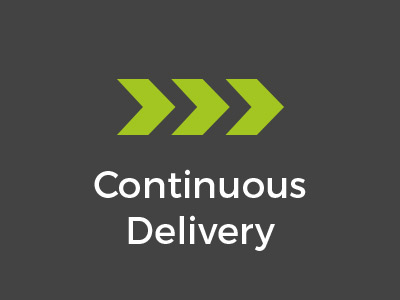- Program
- Program
- Call For Papers
- Program
- Program
- Program
- Program
- Tickets
- Tickets
- Tickets
- Tickets
- Tickets
- Tickets
- Programs
- Blog
- Downloads
- Sponsorship
- Locations
- Service
- Locations
- Register Now
- Register now
- Register Now
- Register now
- Register now
- Register Now
Blog
DevOps Conference
The Conference for Continuous Delivery, Microservices,
Containers, Clouds & Lean Business
21
Aug
/
Amazon Web Services (AWS) provides a huge portfolio of services and products that can be combined to work with one another. Bruns Michael explains how it is possible for developers to just click through this infrastructure using a colorful web UI and the possibility of automation, versioning and replication.
30
Jul
/
DevOps has become a part of good business etiquette for modern companies. Still, companies can achieve an optimal performance, if they integrate these methods with a maximum quality. What we need now isn’t just DevOps but “DevQOps”.
4
Jul
/
The full advantage of DevOps can only be achieved if development and operations work together with the specialist departments and management on a value adding product. Or to put more radical: The topic is no longer called DevOps, but BizDevOps. The integration of business and DevOps changes the cooperation, organization, and processes of companies. All involved must set impulses for the digital transformation of the company and can generate economic benefits faster.
13
Jun
Data-driven decision-making is a goal of most leaders today. Unfortunately, between the overwhelming amounts of data available to us and the ease of falling prey to misleading vanity metrics, how to begin this journey can feel extremely elusive. In this talk from DevOpsCon 2018 Julia Wester, co-founder and Principal Consultant at Lagom Solutions, discusses ways to map your metrics back to your desired goals and a better understanding of metrics safety. This is the first step for setting the stage for smart, data-driven decision-making.
4
Jun
/
We spoke with Slava Koltovich and Arkady Ocheretnoy about microservices and how to make Legacy Apllications modern for them
4
May
We spoke with Red Hat’s Michael Hausenblas about Kubernetes and his upcoming talk at the DevOps Conference 2018.
4
Apr
In the DevOps environment, Docker can no longer be reduced only to a container runtime. An application that is divided into several microservices has greater orchestration requirements instead of simple scripts. For this, Docker has introduced the service abstraction Docker Swarm to help orchestrate containers across multiple hosts.
26
Jan
A system such as Kubernetes can be viewed from different angles. Some think of it in terms of infrastructure, as the successor to OpenStack, although the infrastructure is cloud-agnostic. For others, it is a platform which makes it easier to orchestrate microservice architectures — or cloud-native architectures, as they are called nowadays — to deploy applications more easily, plus making them more resilient and scalable.
23
Nov
Higher quality, stability as well as faster time-to-market make Continuous Delivery a must. But are you ready for it?
Jez Humble, author of the Jolt Award winning Continuous Delivery book, says if you can affirmatively answer these five questions you are ready!
23
Nov
It’s a common claim to say a new technology is revolutionizing the tech industry. But in this case, the revolution might be containerized. We dive into the hype about Docker to see what it’s all about with help from 12 Docker captains.
Stay tuned:
Behind the Tracks
Kubernetes Ecosystem
Docker, Kubernetes & Co
Microservices & Software Architecture
Maximize development productivity
Continuous Delivery & Automation
Build, test and deploy agile
Cloud Platforms & Serverless
Cloud-based & native apps
Monitoring, Traceability & Diagnostics
Handle the complexity of microservices applications
Security
DevSecOps for safer applications
Business & Company Culture
Radically optimize IT
Organizational Change
Overcome obstacles on the road to DevOps
Live Demo #slideless
Showing how technology really works









